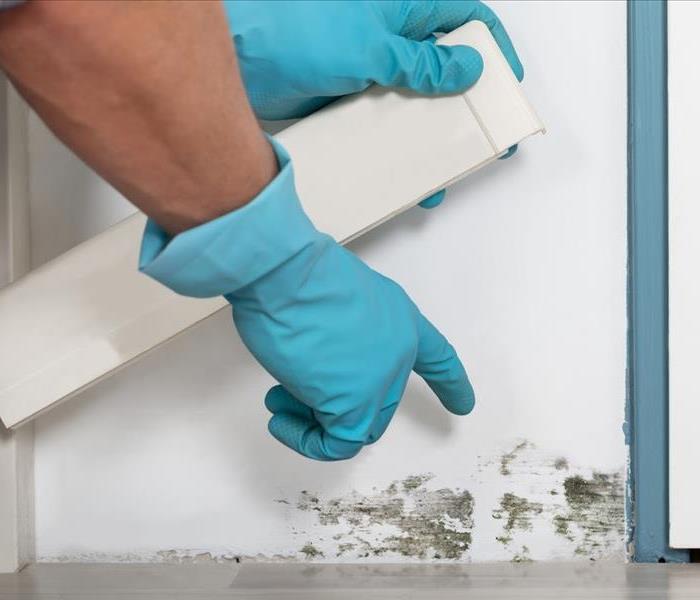All About Mold Infestation After a Water Disaster | SERVPRO of East Onondaga
10/25/2019 (Permalink)
All About Mold Infestation After a Water Disaster
The cause of mold is well-known — an excess of moisture. Well, unfortunately, after a water disaster such as a flood or hurricane, you'll have a lot of excess moisture in your home or business. Even after you've gotten rid of the water itself, the moisture will have likely seeped into the crevices. And that's where you can get mold.
The disaster doesn't have to be huge for your property to be in danger. If you've seen any signs of excess moisture from a bad rainstorm or a water line break, you might have a mold infestation in your future. Find out about the negative effects of mold and what to do about potential infestation.
Mold Damage to Your Property
If your property went through a water disaster big or small, you should expect to have hidden mold. Water from flooding can get into the corners of your home, affecting areas between walls and inside vents, which means that you need to be concerned with more than just what you can see.
Even if you can't see the mold, you might be able to smell it. Mold has a distinct musty odor. If left alone, this odor will sink into permeable surfaces, such as fabrics and drywall, even if the surface itself never got wet.
The more obvious sign of mold on your property is the visual damage it creates. Mold ranges in color from white to black, with gray, brown, yellow, and green mold making an appearance. When you see mold on impermeable surfaces, such as glass or metal, it might not cause as much damage.
However, mold will stain permeable surfaces. Mold stains can be difficult to remove completely, especially if the mold is left to grow for long periods, so have it removed by a professional as soon as you encounter it.
Mold Prevention Directly After a Water Disaster
After a water disaster, you have a small window to prevent mold from taking hold on your property. The Centers for Disease Control and Prevention give the timeframe of 24 to 48 hours. Your main objective is to dry out your property to prevent the mold infestation. You should open all your doors and windows and use fans to dry out the rooms. Make sure the fans are blowing outside, not inside.
Unfortunately, you'll need to get rid of all porous items that got wet and couldn’t be addressed during the 48 hour window. This list will likely include carpets and rugs, but clothing, furniture, and textiles are probably on the list, too. You can clean any non-porous items with a solution of bleach and water.
Unless your water disaster was small — like a washer overflow — you'll probably need professional help to prevent or clean up mold from your property.
Mold Removal After a Water Disaster
Restoration experts will take a comprehensive approach to restoring your property after a water disaster to prevent a mold infestation. For instance, they may inspect your appliances and advise you to discard them. Appliances can harbor mold spores.
Some bigger steps they'll take include removing and replacing damaged wall board. These types of porous surfaces often wick up moisture higher than the water line, so they may have a big project. Wooden trim that got wet will also have to be replaced. They'll probably also examine your duct system for signs of moisture or mold.
You have a lot of problems to overcome after a water disaster. Don't let a mold infestation become one of them. SERVPRO of East Onondaga professionals can get your property dried out and mold free quickly. Visit our website to learn more.






 24/7 Emergency Service
24/7 Emergency Service
